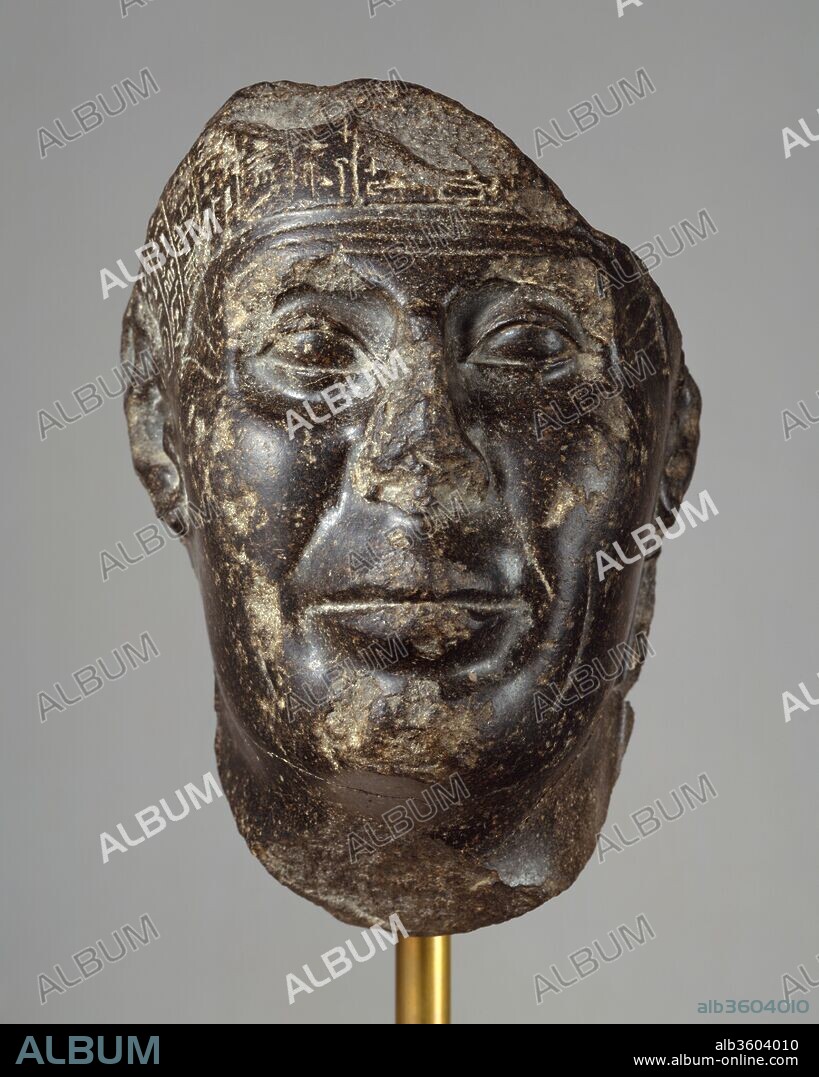alb3604010
Head from a Statue with Magical Texts

|
Ajouter à une autre Lightbox |
|
Ajouter à une autre Lightbox |



Avez-vous déjà un compte? S'identifier
Vous n'avez pas de compte ? S'inscrire
Acheter cette image

Titre:
Head from a Statue with Magical Texts
Légende:
Voir la traduction automatique
Head from a Statue with Magical Texts. Dimensions: H. 21.2 cm (8 3/8 in.); W. 14.5 cm (5 11/16 in.); D. 11.5 cm (4 1/2 in.). Dynasty: Dynasty 30. Reign: probably reign of Nectanebo II. Date: probably 360-343 B.C..
Magical texts like those on the Metternich stela (50.85) probably covered all but the face, feet, and hands of the statue to which this fragment belonged. The statue would have stood in a temple where it could be visited by persons wishing to be healed. Inscribed statues of this type can almost all be dated to the fourth century.
A man well-advanced in years is depicted, his skin soft and marked by fine creases but his small eyes and his wide mouth still sure. Realistic representations are known from late Dynasty 26 and probably continued to be made during the Persian Period, although little can be assigned to that interval with certainty; thereafter they knew continuous popularity from the fourth century until the end of the Ptolemaic Period.
Technique/matériel:
BASALT
Période:
LATE PERIOD
Musée:
Metropolitan Museum of Art, New York, USA
Crédit:
Album / Metropolitan Museum of Art, NY
Autorisations:
Modèle: Non - Propriété: Non
Questions sur les droits?
Questions sur les droits?
Taille de l'image:
3360 x 4200 px | 40.4 MB
Taille d'impression:
28.4 x 35.6 cm | 11.2 x 14.0 in (300 dpi)
Mots clés:
 Pinterest
Pinterest Twitter
Twitter Facebook
Facebook Copier le lien
Copier le lien Email
Email
